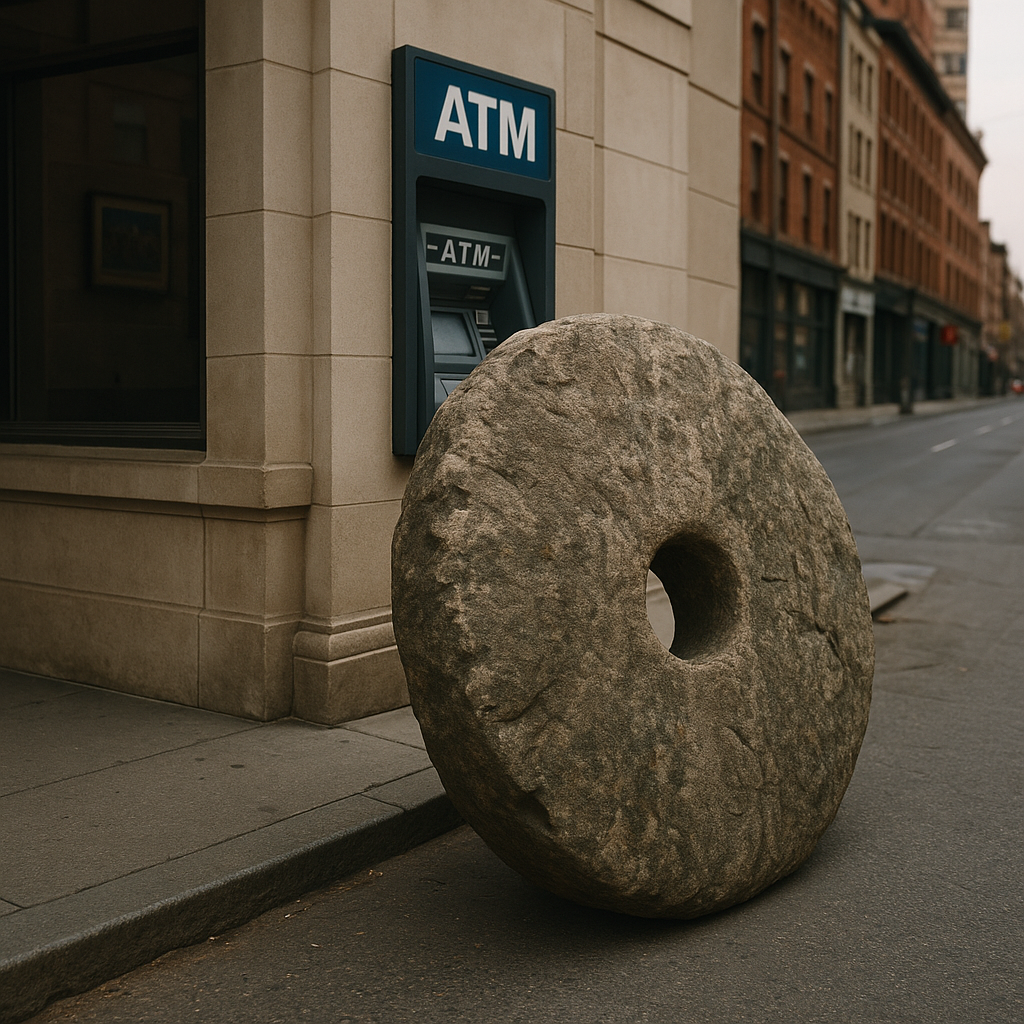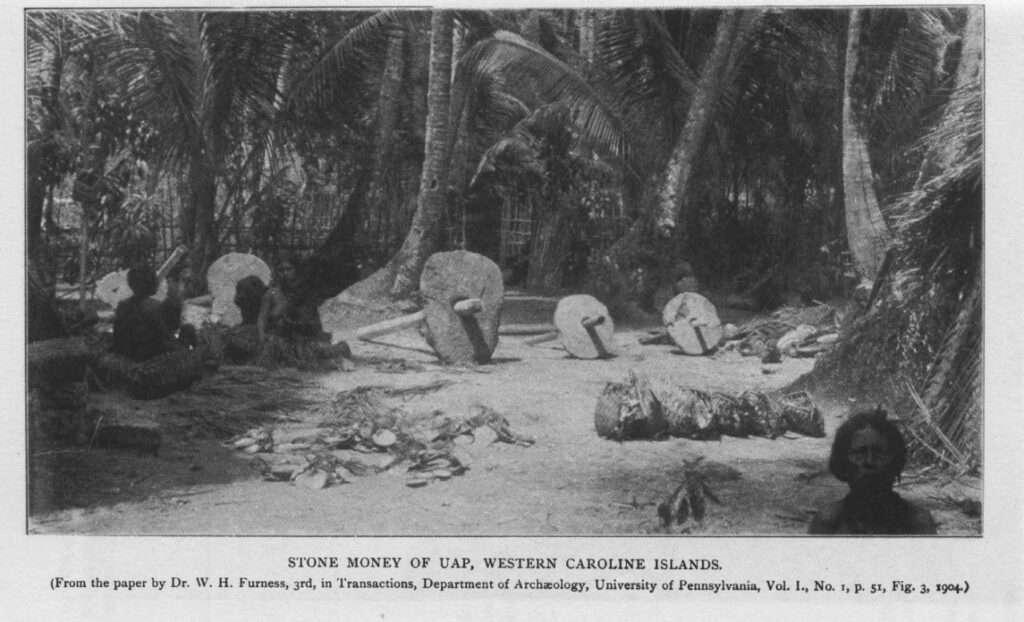
What is Hard Money?
A Beginner’s Guide to Money That Doesn’t Cheat You
What makes money trustworthy? If you’re new to Bitcoin or digital assets, you’ve probably heard people say Bitcoin is “hard money” — but what does that really mean? And how does it compare to the Australian dollar, or other types of money we’ve used throughout history? Let’s explore it in simple terms.
💬 First, What Is Money?
- Store value (save for the future)
- Trade with others (buy and sell)
- Measure things (set prices, compare values)
Throughout history, humans have used everything from cattle to shells to gold and now digital assets as ways transfer value. The question isn’t *what* money is — it’s whether the thing we’re using actually works as money.
🪨 Rai Stones, Beads & Gold: The Evolution of Money
Throughout history, various different items have been used a stores of value and mediums of exchange:
- Rai stones on the island of Yap — enormous stone discs too heavy to move, but hard to fake. This showed early forms of hard money.
- Aghori beads in West Africa — once rare, but overproduced by colonisers, which collapsed their value. An early example of monetary manipulation harming everyday people.
- Gold and silver — valued globally for their scarcity, durability, and wide acceptance.
Each of these monetary goods served their purpose for a period of time. While each had its pros and cons, they show that the thing a society chooses to use as money can take many forms — but not all of them work well over time.
For something to truly function as money, it needs to be easy to trade — not just once, but across time, places, and purchase sizes.
That’s where the idea of salability comes in.
🔑 What is Salability?
Salability refers to how easily something can be traded or used as money without losing value.
To understand this more clearly, let’s break down the word “Salability”
“Sale” — the act of exchanging something for value
“-ability” — means the ability to do something
Therefore, “Salability” literally means ” the ability to be sold or exchanged”
When we look at the salability of a medium of exchange we can consider three things; space, time and scale.
| Type | Explanation |
|---|---|
| Across Time | It doesn’t degrade or lose value as you store it |
| Across Space | It’s recognised and accepted in other locations |
| Across Scale | It can be divided into smaller units for small transactions |
💡 Why Money Supply Matters
One of the most important traits of any money is how much of it exists — and how easily more can be created.
If the supply of money can be increased freely, its value tends to fall over time. The more there is of something, the less each unit is worth. This is why rare or limited-supply forms of money — like gold in the past, or Bitcoin today — have held their value better than forms of money that can be created without limits.
A money with a fixed or limited supply helps protect purchasing power. It gives people the confidence to save, plan, and trade without the fear that their money will silently lose value.
Money History Moment:
Rai Stones and Aghori Beads

By Dr. William Henry Furness III (1866-1920), photographer. – Caroline Furness Jayne, String Figures, (Charles Scribner’s Sons, 1906), opposite page 160., Public Domain, https://commons.wikimedia.org/w/index.php?curid=26444377
Rai stones on the island of Yap were massive, carved stone discs used as money. Their value came from how difficult they were to produce and transport — they couldn’t easily be copied or multiplied.
But over time, that changed. Outsiders (like Irish-American sea captain David O’Keefe in the 1800s) began mass-producing Rai stones using modern tools and ships. When these new stones were brought to the island, they looked the same — but the effort and scarcity behind them were gone. This weakened the value of the original stones and showed how even a once-reliable form of money can lose its strength if the supply becomes easy to expand.
Similarly, Aghori beads (or African trade beads) were once used as money in parts of West Africa. But when European colonisers began flooding the region with mass-produced versions, the beads lost their value — harming the communities that once relied on them.
📉 What Happens When Money Can Be Manipulated?
Every time money can be easily produced, it eventually is — and those closest to the source (the printer) benefit most.
- Governments or rulers print more money to fund wars, bailouts, or crises.
- This increases supply, which reduces purchasing power.
- The ones who suffer most? Everyday people — savers, workers, and those on fixed incomes.
This pattern has repeated throughout history — from Roman coin clipping to modern hyperinflation in Zimbabwe and Venezuela.
⚖️ Hard Money vs Soft Money: Side-by-Side
| Feature | Hard Money (e.g. Bitcoin, Gold) |
Soft Money (e.g. Fiat Currency) |
|---|---|---|
| Durability | Highly durable — doesn’t degrade over time | Can be damaged, lost, or printed on fragile materials |
| Divisibility | Can be divided into small units (e.g. sats, grams) | Divisible, but physical notes/coins have limits |
| Fungibility | Each unit is equal and interchangeable | May vary in quality or traceability (e.g. worn bills) |
| Portability | Easy to transport (digital or compact) | Physical cash is bulky; digital fiat relies on banks |
| Scarcity | Limited supply (e.g. 21M Bitcoin cap) | Can be printed at will by governments |
| Acceptability | Increasing global recognition and adoption | Widely accepted by law and institutions |
🧡 Why Bitcoin Is Often Called “Digital Hard Money”
Bitcoin was designed with many of the same features that made gold a reliable form of money — and improves on them in a digital age:
Scarcity: Only 21 million will ever exist
Predictable Supply: New coins are released at a fixed rate through mining
Decentralised: No single party or government can control it
Transparent: Anyone can verify the supply, rules, and transactions in real time
These features make Bitcoin highly salable — it holds value across time, can be used anywhere, and is divisible down to tiny units (satoshis). It also resists supply manipulation, helping protect the purchasing power of those who choose to use it.
💡 Key Takeaways
- Hard money is scarce, stable, and hard to manipulate.
- History shows manipulated money leads to devaluation — hurting those who save and work.
- Bitcoin is designed to be digital hard money — with fixed rules, no central control, and global accessibility.
- Understanding monetary history helps explain why Bitcoin matters today.
📚 Recommended Reading
Want to go deeper?
Check out The Bitcoin Standard by Saifedean Ammous — an excellent book on money, history, and Bitcoin’s role in our future.
View on The Saif House (not affiliated)
👋 Ready to Take the Next Step?
Want help setting up your first wallet?
Book a free Access Call with Harry from SafeTwentyOne — and learn how to take control of your digital assets safely.
The information in this post is provided for general education and informational purposes only. It does not constitute financial advice, investment advice, legal advice, or any other type of professional advice, and should not be relied upon as such.
While we aim to provide accurate and beginner-friendly explanations about Bitcoin, digital assets, and self-custody practices, we do not hold an Australian Financial Services Licence (AFSL), and we are not authorised to provide financial product advice under Australian law.
We do not make recommendations about buying, selling, or holding any digital assets. You should consider your own circumstances and seek independent advice from a licensed financial adviser or other qualified professional before making any financial decisions.
Use of the information provided is at your own risk. Always verify information from multiple sources and understand the risks involved in managing your own digital assets.
